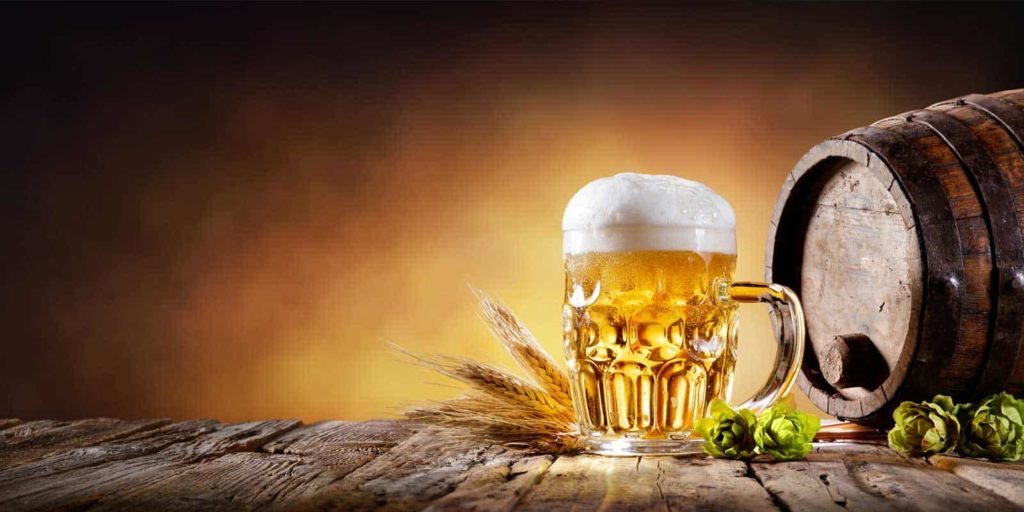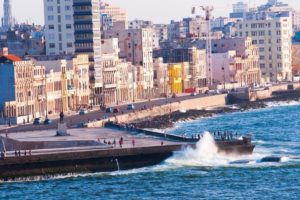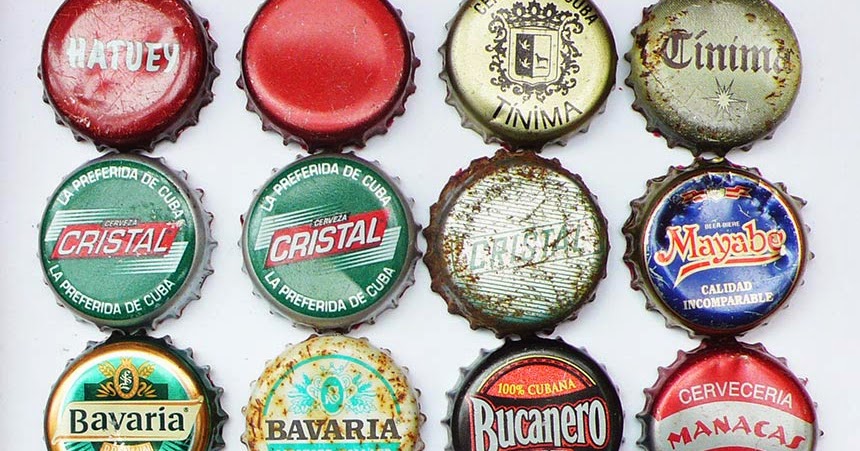LAS FAMOSAS CERVEZAS CUBANAS. CRISTAL, POLAR, HATUEY Y MAS.. PHOTOS/VIDEOS
Aunque Cuba durante decadas ha sido conocida por producir algunos de los mejores rones del mundo, no se queda detrás en la fabricación de buenas cervezas. La mayor de las Antillas por muchos años ha elaborado algunas de las cervezas capaces de satisfacer los gustos más exigentes.
Las cervezas cubanas, aun hoy a pesar de la crisis economica cubana, satisfacen a los gustos más exigentes. Además, con ese clima caluroso y el radiante sol qué mejor que una cerveza para refrescar tus tardes. Desde ahora te contamos sobre las de cervezas más reconocidas, populares y cotizadas que han existido y algunas que aún se mantienen en la actualidad cubana.
HISTORIA DE LA CERVEZA CUBANA
La cerveza cubana nació en 1841 cuando Juan Manuel Asbert y Calixto García comenzaron a producir cerveza en una fábrica en la esquina de San Rafael y Águila, Habana. Intentaron trabajar con el jugo de caña de azúcar, que sustituiría a la cebada europea, pero el intento fue un fracaso y desde entonces los criollos se contentaron con embotellar el líquido enfriando en barriles procedentes del exterior.
Así lo hicieron hasta 1883 que se instaló en la ciudad de Cárdenas Matanzas una fábrica para producirla. No duró mucho, pero en 1888 los impuestos más altos sobre las importaciones aconsejaron el procesamiento del patio de los comerciantes en Cuba. Así surgió en Puentes Grandes, “La Tropical” primera cerveza cubana pero entonces con un producto de baja calidad, que no demoraron en mejorar cuando cerveceros franceses y alemanes contratados especialmente le dieron a la cerveza terminada el “toque” necesario.
En 1888 se fundó en La Habana la llamada “Nueva Fábrica de Hielo”, articulada poco después de la cervecería de Puentes Grandes. Comenzó a desarrollarse “La Tropical”, bajo la propiedad de Ramón Herrera Sancibrian, bisabuelo de Julio Blanco Herrera, quien con su tenacidad logró posteriormente producir el cincuenta y ocho por ciento de las producidas anualmente en el país durante los años cincuenta.
En anexos a la fábrica, el padre Julio Blanco Herrera construyó en 1929 el estadio “La Tropical” Pedro Marrero hoy. Este campo, que fue sede de los Segundos Juegos Centroamericanos y del Caribe, tuvo lugar en 1940.
En sus comienzos, las marcas en el mercado fueron la cerveza clara “Tropical”, la Tropical “Excelsior”, la cerveza clara “Crystal Palatine”, la cerveza tipo Múnich oscuro “Tivoli” y “Maltina Tivoli”. La exquisitez de la marca trascendió las costas de la isla para ganar premios en Europa y Estados Unidos, los más significativos fueron el Gran Premio en la exposición internacional en Londres en 1896 y Bruselas en 1897; Diploma y Gran Premio en la exposición internacional del progreso, París, 1912; Medalla de oro en la exposición de agricultura e industria en La Habana, en 1909 y 1911; La medalla de bronce en la exposición de San Luis, 1904, y sus medallas se exhiben en la vieja etiqueta.
Había otros muy populares, como “Hatuey” y “Polar”. El primero trajo a un nativo cubano en su etiqueta, y el segundo un oso blanco. Fueron promovidos: “La gente cerveza y la gente nunca está mal”. Por su exquisito gusto, magníficas condiciones digestivas y resultados tonificantes.
La otra marca dijo: “Pregúntale a Hatuey. La Gran Cerveza Cubana “, mientras que la publicidad Cristal insistió:” ¡Qué alentado! ¡Que feliz! ¡Cómo estimula! Una cerveza extraordinaria “. Era una cuestión de preferencia. Había cervezas importadas, pero tenían mucha aceptación, aunque algunas marcas de origen americano se presentaron en latas; Una novedad en el momento.
Antes de 1919, la “Compañía Santiago Brewing” fue fundada por el Sr. Eduardo Chibas. En ese año, bajo la dirección de Don Enrique Schueg y Chassin, las instalaciones fueron adquiridas por la “Compañía Ron Bacardí SA”. La cervecería “Hatuey”, ubicada en el barrio San Pedrito de Santiago de Cuba, fue comprada con el único propósito de construir una nueva destilería Bacardí. La nueva destilería fue inaugurada el 4 de febrero de 1922.
LA PRODUCCION DE CERVEZA EN CUBA
A Emilio Bacardí, historiador cubano y exitoso empresario de cerveza, fundador del museo que lleva su nombre en Santiago de Cuba, se le atribuye la afirmación de que el progreso de Cuba se puede medir por el consumo de cerveza.
En sus primeros 21 años, la producción y las ventas en la cervecería San Pedrito en Santiago de Cuba se quintuplicaron. Para satisfacer la creciente sed de Cuba por la cerveza “Hatuey” fue creada la Cervecería Modelo en 1947. Esta cervecería fue construida a unas diez millas de La Habana en “El Cotorro”. Siendo fiel a su nombre, era de hecho una fábrica de cerveza modelo.
La calidad de la cerveza cubana fue tal que los cerveceros extranjeros similares nunca lograron penetrar en el mercado interno. Nadie podía competir en el precio y la calidad de las cervezas cubanas a pesar de que algunas empresas extranjeras trataron de hacerlo.
En 1958, Cuba tenía cinco fábricas de cerveza produciendo unos 30 millones de litros al año para una población de 6 millones de habitantes. Teniendo en cuenta la reducción del consumo del producto por mujeres y niños, podemos inferir el alto consumo per cápita del producto entre los bebedores. El cubano siempre ha sentido cariño por el ron.
El mayor consumo de cerveza tuvo lugar en bares y cantinas aunque algunos preferían hacerlo en la “bodega” de la esquina. Allí, en un ambiente “familiar”, hablando con el bodeguero bebiendo una cerveza espumosa, una copa de “Lager” con jamón y queso como “saladitos” o con algunas aceitunas, mientras la victrola hacía oir un Bolero.
Con el triunfo de la Revolución de 1959 en Cuba, la fábrica se nacionalizó y pasó a llamarse Cervecería Antonio Díaz Santana. En el año 1983 comenzó la producción de la Cerveza Manacas y en los años noventa la Cerveza Brujas.
Producida por la Cervecería Bucanero S.A, la cerveza Bucanero es la más fuerte que se produce y comercializa en la Isla. Su presentación es en botellas o latas, pero la icónica es la lata roja de 355ml. Tiene 5.4 grados de alcohol.
Y bien, la pregunta del millón: Cual ha sido la mejor cerveza de Cuba? La respuesta es complicada porque depende de gustos, pero, sin duda, entre las candidatas finales se encuentran la cerveza Cristal, Polar, Hatuey y actualmente la Bucanero.
THE FAMOUS CUBAN BEERS. POLAR, HATUEY, CRISTAL AND MORE .. PHOTOS/VIDEOS
Although Cuba for decades has been known for producing some of the best rums in the world, it is not far behind in making good beers. The largest of the Antilles for many years has produced some of the beers capable of satisfying the most demanding tastes.
Cuban beers, even today despite the Cuban economic crisis, satisfy the most demanding tastes. Also, with this hot climate and the radiant sun, what better than a beer to refresh your afternoons. From now on we will tell you about the most recognized, popular, and sought-after beers that have existed and some that still remain in Cuban today.
HISTORY OF CUBAN BEER
Cuban beer was born in 1841 when Juan Manuel Asbert and Calixto García began producing beer in a factory on the corner of San Rafael and Águila, Havana. They tried to work with sugarcane juice, which would replace European barley, but the attempt was a failure and since then the Creoles have been content to bottle the liquid by cooling in barrels from abroad.
They did so until 1883 when a factory was installed in the city of Cárdenas Matanzas to produce it. It did not last long, but in 1888 higher taxes on imports advised the processing of the merchants’ yard in Cuba. This is how “La Tropical” arose in Puentes Grandes, the first Cuban beer but then with a low-quality product, which did not take long to improve when specially hired French and German brewers gave the finished beer the necessary “touch”.
In 1888 the so-called “New Ice Factory” was founded in Havana, articulated shortly after the Puentes Grandes brewery. “La Tropical” began to develop, under the ownership of Ramón Herrera Sancibrian, great-grandfather of Julio Blanco Herrera, who with his tenacity subsequently managed to produce fifty-eight percent of those produced annually in the country during the 1950s.
In annexes to the factory, Father Julio Blanco Herrera built the “La Tropical” Pedro Marrero stadium in 1929 today. This field, which hosted the Second Central American and Caribbean Games, took place in 1940.
At the beginning, the brands on the market were the “Tropical” light beer, the Tropical “Excelsior”, the “Crystal Palatine” light beer, the dark Munich-type beer “Tivoli” and “Maltina Tivoli”. The exquisiteness of the brand transcended the coasts of the island to win awards in Europe and the United States, the most significant being the Grand Prize at the international exhibition in London in 1896 and Brussels in 1897; Diploma and Grand Prize at the international exhibition of progress, Paris, 1912; Gold medal in the exhibition of agriculture and industry in Havana, in 1909 and 1911; The bronze medal at the St. Louis exhibition, 1904, and his medals are displayed on the old label.
There were other very popular ones, like “Hatuey” and “Polar”. The first brought a Cuban native on his label, and the second a white bear. They were promoted: “People beer and people are never bad.” For its exquisite taste, magnificent digestive conditions, and invigorating results.
The other brand said: “Ask Hatuey. The Great Cuban Beer “, while Cristal advertising insisted:” How encouraged! So happy! How stimulating! An extraordinary beer “. It was a matter of preference. There were imported beers, but they were very popular, although some brands of American origin were presented in cans; A novelty at the moment.
Before 1919, the “Santiago Brewing Company” was founded by Mr. Eduardo Chibas. In that year, under the direction of Mr. Enrique Schueg and Chassin, the facilities were acquired by the “Compañía Ron Bacardí SA”. The “Hatuey” brewery, located in the San Pedrito neighborhood of Santiago de Cuba, was bought with the sole purpose of building a new Bacardi distillery. The new distillery was inaugurated on February 4, 1922.
THE BEERS PRODUCTION IN CUBA
Emilio Bacardi, Cuban historian and successful beer entrepreneur, founder of the museum that bears his name in Santiago de Cuba, is credited with claiming that Cuba’s progress can be measured by beer consumption.
In its first 21 years, production and sales at the San Pedrito brewery in Santiago de Cuba increased fivefold. To satisfy Cuba’s growing thirst for “Hatuey” beer, the Modelo Brewery was created in 1947. This brewery was built about ten miles from Havana in “El Cotorro”. Being true to its name, it was indeed a model brewery.
The quality of Cuban beer was such that similar foreign brewers never managed to penetrate the domestic market. No one could compete on the price and quality of Cuban beers despite the fact that some foreign companies tried to do so.
In 1958, Cuba had five breweries producing about 30 million liters a year for a population of 6 million inhabitants. Taking into account the reduction in the consumption of the product by women and children, we can infer the high per capita consumption of the product among drinkers. The Cuban has always cared for rum.
The highest consumption of beer took place in bars and canteens, although some preferred to do so in the “bodega” on the corner. There, in a “family” environment, talking to the winemaker drinking a foamy beer, a glass of “Lager” with ham and cheese as “saladitos” or with some olives, while the victrola played a Bolero.
With the triumph of the 1959 Revolution in Cuba, the factory was nationalized and renamed Cervecería Antonio Díaz Santana. In 1983 the production of the Manacas Beer began and in the nineties of the Brujas Beer.
Being nestled in this water table, its abundant springs make Manacas Beer a fresh, clear, and tasty beer on the palate. It is a beer that is sold in 350 ml bottles, especially in the central region of the country. It has 4.5% alcohol.
Well, the million-dollar question: What has been the best beer in Cuba? The answer is complicated because it depends on tastes, but, without a doubt, among the final candidates are Cristal, Polar, Hatuey, and currently Bucanero beer.
Agencias / ConexiónCubana / JJaronu / Derubín Jácome / Extractos/ Excerpts/ Internet Photos/ Arnoldo Varona / www.TheCubanHistory.com
THE CUBAN HISTORY, HOLLYWOOD.












